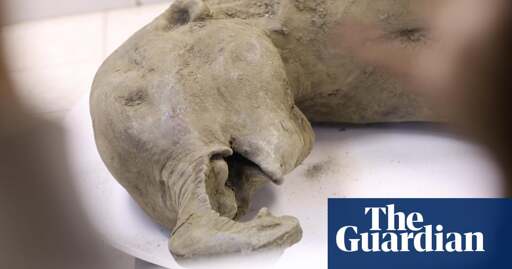- cross-posted to:
- archaeology
- cross-posted to:
- archaeology
Summary
Russian scientists have unveiled the exceptionally well-preserved remains of a 50,000-year-old baby mammoth, named Yana, discovered in Yakutia’s permafrost this summer.
Weighing 180kg and measuring 120cm tall, it is considered the world’s best-preserved mammoth carcass and one of only seven complete remains ever found.
Displayed at North-Eastern Federal University, researchers noted its remarkable condition and plan to study its exact age, estimated at just over one year.
Yakutia’s permafrost, known for preserving prehistoric animals, has also yielded remains of a horse, bison, and lemming.
I feel like this is more bad news than good considering the reason they’re finding mammoths in the permafrost…
We just call it frost now. At this rate, Glacier National Park will just be National Park in the next few decades.
Yeah but hopefully we can take some samples and grow mammoth steaks in a lab
I won’t be happy until I can put a giant rack of ribs on the side of my car like Fred Flintsone.
Right? I don’t know why they’re even bothering lab-growing meat from normal animals.
I demand Giant Sloth Bacon
Plus they named it after my college fuck buddy. I honestly don’t know if that’s good or bad.
That’s its slave name. It’s real name is [UNINTELLIGIBLE MAMMOTH TRUMPET].
Being born into the ice age and being frozen to death just a year or two later is also kind of a bummer.
Weighing 180kg and measuring 120cm tall, it is considered the world’s best-preserved mammoth carcass and one of only seven complete remains ever found.
I am not a scientist, but it looks closer to 60% complete to me.
I remember the horse.
All this permafrost thawing isn’t a good thing, except for Russia, they get more usable land. But for everyone else it’s a bigger warning sign than glacial melt.
I doubt that Russia will get much usable land, at least for quite a while. The melted permafrost leaves behind muddy landscapes that results in the destruction of the floral and the animals that eat those plants, and also results in more droughts
Humans can make the least arable land farmable when they need to. Hopefully the people of Russia never need to but they will, we all will.
Why do they always find these in Russia and not other parts of the arctic? I mean Russia is big but they seem to find these there every few years, and I can’t think of a single example from another country.
Siberia is entirely in Russia. There aren’t many countries in the artic. North America was torn up by glaciers, Greenland and Iceland are hotspots, any of the European countries are very mountainous. Siberia is mostly permafrost and has been for a long while. Added to that, Russia has the most landmass in the artic circle.









